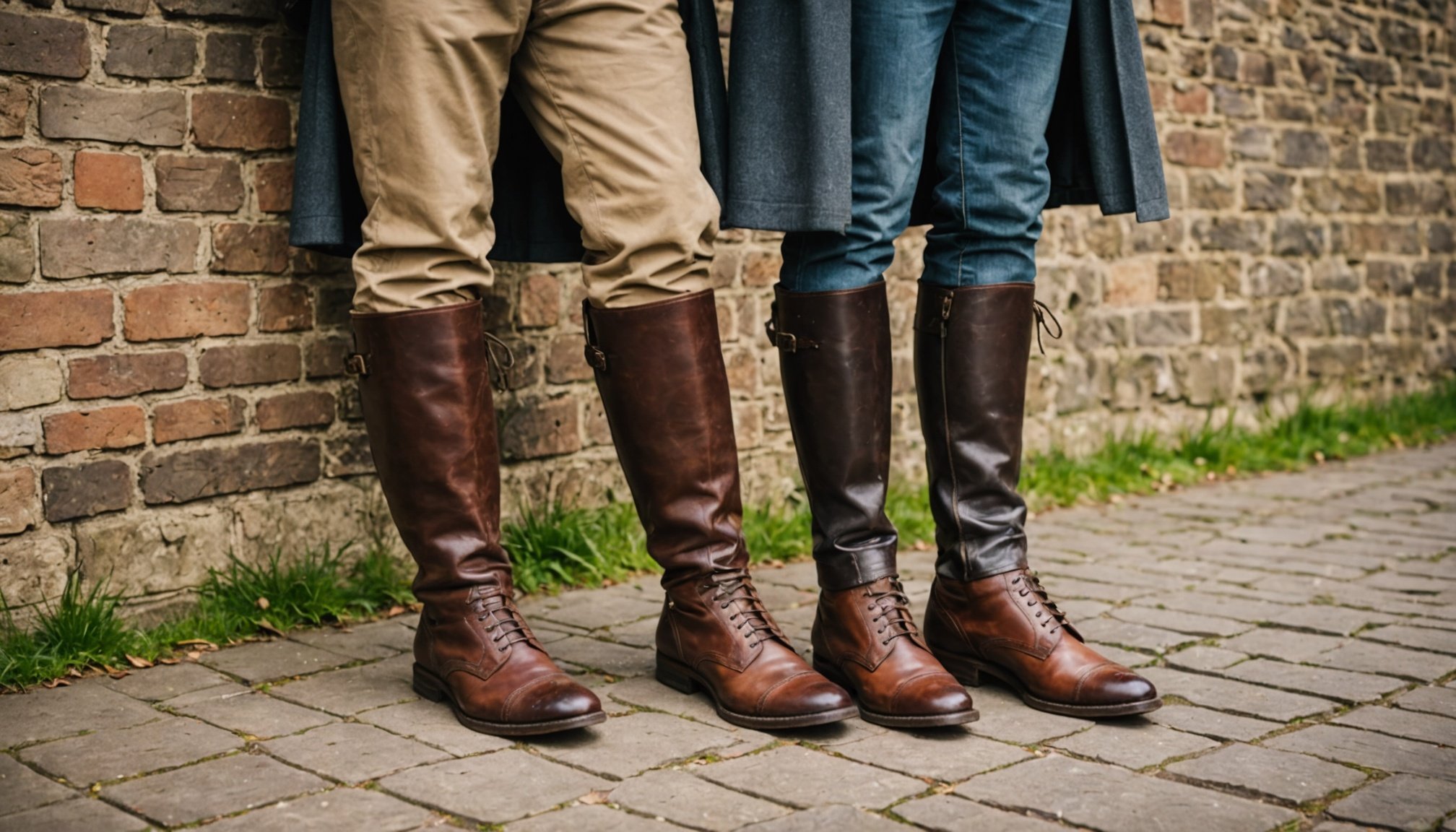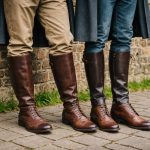Importance of Choosing the Right Footwear for Historic Exploration
Selecting the appropriate footwear is crucial for an enjoyable exploration of heritage sites. Imagine wandering through ancient ruins or cobbled streets, only to be hampered by the wrong type of shoes. The right footwear significance becomes evident with the impact it has on comfort and the overall exploration experience.
When exploring heritage sites, one must consider several factors for choosing shoes. The terrain is often unpredictable—ranging from uneven surfaces to potentially slippery paths. Comfortable shoes with adequate support can prevent fatigue and ensure more time is spent exploring rather than resting. Footwear significance also means selecting materials that are breathable, durable, and resistant to various weather conditions.
Also to read : Finding the Perfect Heel Height: Balancing Comfort and Style for London”s Dynamic Lifestyle
Furthermore, the right pair of shoes can enhance historical site visits by allowing you to focus on the beauty and history surrounding you, instead of discomfort. Additionally, lightweight shoes make it easier to pack light and travel efficiently from one historic site to another. It is vital to match the style and function of your shoes to the type of exploration you’ll be undertaking—whether strolling through museums or navigating scenic trails.
Top Footwear Recommendations for Historic Sites
When planning to explore historical sites, selecting the right footwear is crucial. Comfort and practicality should top your list.
In the same genre : Mastering the Art of Styling a Silk Blouse for Effortless Day-to-Night Looks in Manchester
Comfortable Sneakers
For those seeking the best walking shoes for historic sites, comfortable sneakers are indispensable. Their ergonomic design caters to extended walking sessions, preventing foot fatigue. Brands like Nike and New Balance offer models renowned for comfort, such as the Nike Air Max and the New Balance 990. These sneakers are lauded for their cushioning and breathability, essential features for navigating cobblestone streets and uneven surfaces. Travelers share positive reviews, highlighting the sneakers’ ability to withstand extensive historical walks without discomfort.
Supportive Hiking Boots
If your journey includes rugged terrains, supportive hiking boots are paramount. The importance of ankle support cannot be overstated, safeguarding against injuries. Lightweight boots such as the Merrell Moab offer flexibility and ease of movement. Conversely, heavy-duty options like the Scarpa are ideal for challenging trails. Both categories receive praise for durability and protective features, with many travelers appreciating the balance between weight and sturdiness.
Stylish Yet Practical Sandals
For summer explorations, stylish yet practical sandals fit the bill. Opt for sandals that combine aesthetics and comfort, ensuring your feet remain cool. Brands like Teva and Birkenstock provide supportive sandals with chic designs. Their adjustable straps and cushioned soles cater to both fashion-conscious individuals and those prioritizing comfort.
Special Considerations for Historical Contexts
When exploring historical sites, the choice of site-specific footwear is crucial. These sites often possess unique terrains, influenced by their historical and natural contexts. For instance, cobblestone streets in ancient European cities call for sturdy shoes that offer grip without sacrificing comfort. Likewise, desert-like conditions at sites such as Petra demand breathable and sandy terrain-tolerant footwear. Understanding the terrain not only ensures a safer, more comfortable experience but also enhances the adventure.
Weather and seasonal conditions further dictate footwear choice. Rainy seasons can transform paths into slippery walkways, necessitating waterproof and non-slip shoes. Conversely, hot climates may demand lightweight, airy shoes to keep feet cool. Preparing for these conditions allows visitors to focus on immersing themselves in the history around them.
Respecting the cultural footwear traditions is equally important. In regions where removing shoes might be a sign of respect or religious adherence, easily removable footwear is considerate of local customs. Moreover, selecting styles that echo traditional designs can demonstrate admiration for local heritage, fostering a deeper connection with the site. This balance between practicality and respect is key to a rewarding exploration.
Tips for Selecting the Best Footwear
Choosing the right footwear can significantly impact your overall comfort and experience. Consider these tips for footwear selection and ensure you’re stepping out in style and ease.
Proper fitting is crucial. Ill-fitting shoes can lead to discomfort and long-term foot issues. Always measure your feet towards the end of the day when they are most swollen to get an accurate size. Many stores offer shoe fitting advice, which can be invaluable for a custom fit. Remember that different brands may have slight variations in sizing, so trying on shoes before purchasing is advisable.
Breaking in new shoes is essential, especially before travel. Start by wearing them around the house for short periods, gradually increasing the time. This process helps soften the material and prevent blisters.
When considering outdoor footwear, pay attention to the terrain you’ll be navigating. Shoes for hiking differ from those intended for urban explorations, so choose accordingly based on the adventure ahead.
Proper care and packing of your footwear can extend its lifespan. Stuff shoes with soft items to maintain their shape and keep them in a protective bag to safeguard against scuffs. These tips ensure your shoes are always in suitable condition for your journey.
User Experiences and Testimonials
When planning a travel adventure, selecting the right footwear is crucial for exploring with comfort. According to numerous footwear user reviews, travelers highlight how shoe performance can significantly impact their journeys. For instance, one traveler recounted their experience visiting historic sites, praising their lightweight shoes for making long walking tours more bearable. Such testimonials often underscore the importance of choosing footwear that balances support and portability, especially when navigating uneven terrain.
Common challenges faced by explorers include ensuring durability and protection without sacrificing comfort. Reviews frequently mention that while some shoes excel in providing cushion, they might falter on rugged surfaces, leading to discomfort. This dilemma is a recurring theme in many travel experiences, where users emphasize the trade-off between style and practicality.
These firsthand accounts offer invaluable insights, enabling future explorers to make informed decisions. By learning from others’ experiences, travelers can avoid common pitfalls, ensuring a more enjoyable and comfortable journey. As evident from the breadth of user feedback, prioritizing comfort and functionality in footwear choices is essential for enhancing travel adventures and maximizing enjoyment of new destinations.











